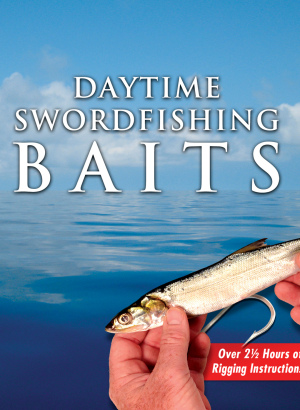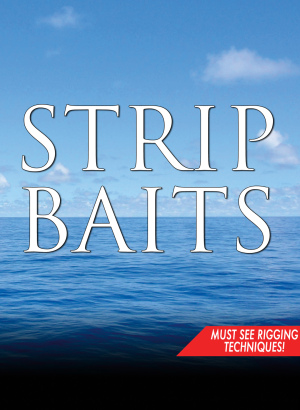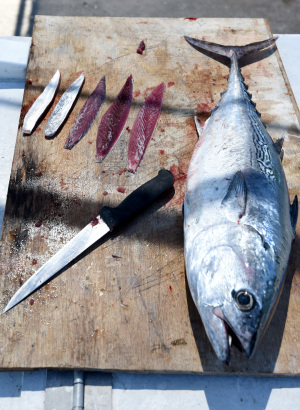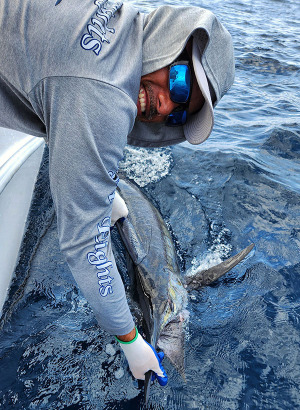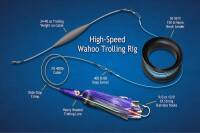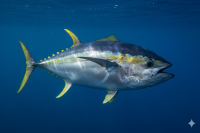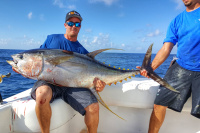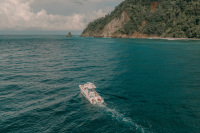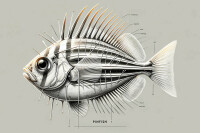Bonito is arguably the ocean's best bait fish, attracting everything from trophy marlin to kingfish with its oily flesh and natural appeal. Learn how to catch, prepare, and use bonito as live bait, strips, and chunks to consistently hook the game fish of your dreams.
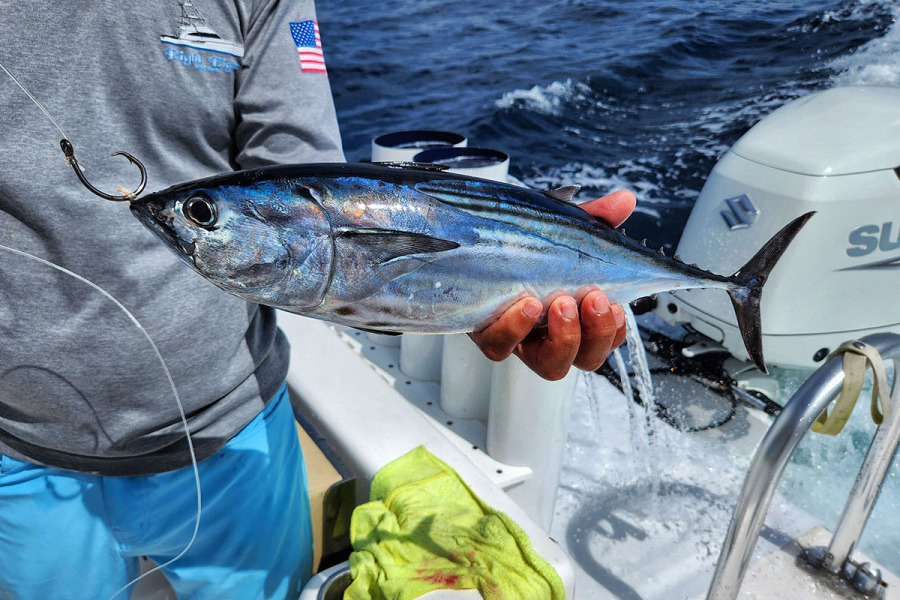
Bonito: Nature's Ultimate Baitfish
The Ultimate Guide to Using Bonito as Bait
In the world of saltwater fishing, few baits command the respect and proven track record of the humble bonito. These torpedo-shaped members of the tuna family have earned a reputation as perhaps the most effective bait fish in the ocean. Anglers from the rocky shores of New England to the tropical waters of the Florida Keys, from the kelp beds of California to the offshore rigs of the Gulf of Mexico all share a common secret: bonito bait consistently produces trophy-class catches. What makes bonito so special isn't just their widespread availability across global waters, but their remarkable combination of natural attributes that make them irresistible to predatory game fish. Whether used live, dead, in strips, or chunks, bonito have supported both recreational and commercial fisheries for generations, often outperforming artificial lures and other natural baits when targeting the ocean's most prized species.
Bonito Species and Distribution
- Atlantic Bonito (Sarda sarda): Found throughout the western Atlantic Ocean from Nova Scotia to Argentina, as well as in the Mediterranean and Black Seas. They typically grow to 30 inches and about 12 pounds, with most catches averaging 18-24 inches in length. Their distinct coloration features silver lower sides and belly, blue-green dorsal fins, and dark, slanted stripes along the back.
- Pacific Bonito (Sarda chiliensis): Inhabits the eastern Pacific Ocean, most prevalent south of Point Conception, California, extending into Mexican waters. Pacific bonito generally grow larger than their Atlantic cousins, reaching up to 40 inches and 25 pounds—sometimes nearly double the size of Atlantic bonito. They display a dark blue color above, dusky on the sides, silvery below, with similar slanted dark stripes along the back.
- Jetties, rocky points, and cliffs
- Steep drop-off beaches
- Inlets and river mouths
- Nearshore reefs and ledges
- Offshore banks and underwater structures
Biological and Ecological Importance
- Larger tunas (bluefin, yellowfin)
- Billfish (marlin, sailfish)
- Sharks
- Marine mammals (dolphins, sea lions)
- Other pelagic predators (wahoo, king mackerel)

Why Bonito Makes Outstanding Bait
- Fishing in rough conditions
- Trolling at higher speeds
- Making multiple presentations to the same school
- Targeting species known for destroying softer baits
- Used live for maximum movement and attraction
- Rigged whole and dead for trolling
- Cut into chunks for bottom fishing
- Sliced into strips for trolling or casting
- Ground up for chumming
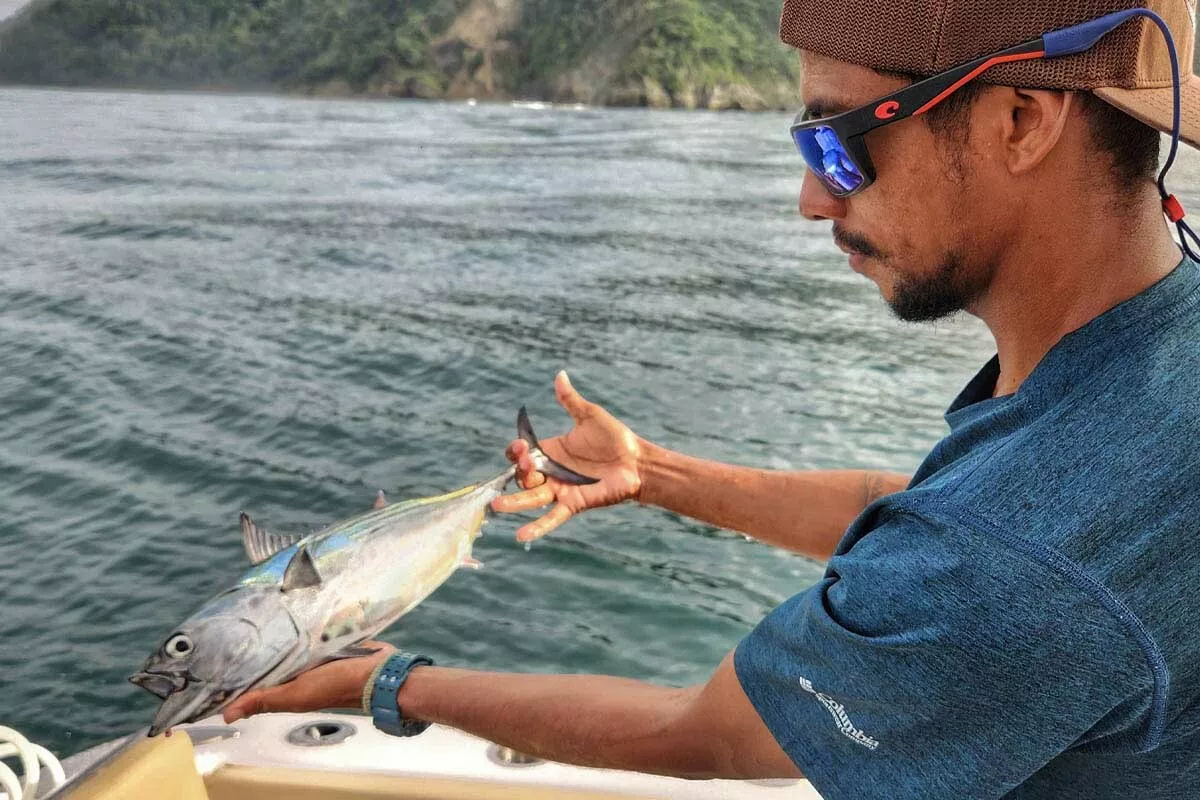
Types of Bait from Bonito
- Use specialized tuna tubes or large baitwells with robust water circulation
- Handle with wet hands to avoid removing protective slime
- Minimize stress during capture and transfer
- Use bridle rigging techniques to keep the bait swimming naturally
- Deploy using outriggers when trolling to keep the bait near the surface
- Use chin weights or guards to prevent spinning
- Rig with multiple hooks to improve hookup rates
- Add wire leader for toothy species
- Maintain moderate trolling speeds (3-4 knots) to prevent washing out
- Bottom species like snapper and grouper
- Sharks and other scent-oriented feeders
- Creating chum slicks to attract pelagic species
- Drift fishing over structure
- Trolled behind lure heads or skirts
- Used for kingfish, wahoo, sailfish, and mahi-mahi
- Fishing areas with high pressure where natural baits outperform artificials
- Needing a bait that can withstand multiple strikes
- For larger target species
- When slow-trolling or drift fishing
- As an alternative to whole bait when targeting medium-sized predators
- Toughens the flesh for better hook retention
- Allows for longer storage periods
- Can enhance the scent profile under certain conditions
- Provides ready-to-use bait when fresh bonito isn't available
Techniques for Using Bonito as Bait
Successful fishing with bonito bait requires specific techniques tailored to each presentation style and target species. The following approaches have proven effective across various fishing scenarios:
Live Bait Rigging
Live bonito represents the ultimate big-game bait, particularly for selective marlin, tuna, and sailfish. The key to success lies in proper rigging and deployment:
- Threading waxed floss or heavy monofilament through the soft tissue just above the bonito's eyes
- Creating a small loop with the floss
- Attaching a strong circle hook (typically 8/0-12/0) to the loop
- Positioning the hook so it rides free above the fish's nose
- Troll live bonito slowly (1-2 knots)
- Use outriggers to keep the bait near the surface
- Position baits 30-50 feet behind the boat
- Occasionally bump the boat in and out of gear to maintain an enticing action
- When a fish strikes, allow it to take the bait before smoothly engaging the drag
Dead Bait Presentation
Whole dead bonito can be rigged in several ways depending on the target species:
- For wahoo and other toothy predators, use a triple treble hook rig
- Place one hook through the roof of the mouth and secure two more along the sides
- Add wire leader for bite protection
- Add a chin weight to prevent spinning
- Use a nose guard or pin to maintain shape
- Troll at moderate speeds (3-4 knots)
- Rig with a combination of J-hooks or circle hooks depending on target species and regulations
Strip Bait Techniques
Bonito strips are prized for their durability and fishing action, particularly when trolled:
- Cut strips from the belly section for maximum shine and strength
- Trim to about 1/4 inch thickness
- Create a tapered, baitfish-like shape
- Notch the head for better rigging and action
- Double hook rig: Use two appropriately sized hooks with the lead hook through the head of the strip
- Sea Witch combination: Add a colorful trolling skirt in front of the strip for added attraction
- Dredge presentation: Use multiple strips as part of a dredge teaser system for billfish
- Florida style: Combining strips with mylar skirts for sailfish
- Hawaiian style: Using larger strips behind artificial jet heads for marlin
- California style: Rigging behind feathers for tuna and mahi-mahi
Chumming Techniques
- Cut small pieces of bonito and distribute consistently behind the boat
- Create a steady stream rather than dumping large amounts at once
- Add fish oil to enhance the slick
- Present baited hooks within the chum line
- Use weighted chum bags or sand balls to get chum to the desired depth
- For reef fishing, deploy chum near structure but not directly on it
- Adjust amount based on current strength—more in strong current, less in slack water
Species-Specific Approaches
Different predators respond better to specific bonito presentations:
Target Species When Using Bonito Bait
Bonito's effectiveness as bait spans virtually every major game fish in temperate and tropical oceans worldwide. Here's a breakdown of the primary target species and the most effective bonito presentations for each:
Billfish
Blue and White Marlin: These apex predators respond exceptionally well to live bonito, which mimics their natural prey. For blue marlin in particular, larger live bonito (2-5 pounds) bridle-rigged and deployed from outriggers produces consistent results. In areas like Hawaii, Southern California, and the Caribbean, marlin anglers consider live bonito the premium bait when targeting trophy specimens.
Tuna Species
Yellowfin Tuna: Both live bonito and chunks work exceptionally well. Schools of large yellowfin frequently feed on juvenile bonito in nature, making this a natural prey item. When chunking for yellowfin, a steady stream of bonito pieces creates a feeding frenzy that can result in spectacular action.
Coastal Pelagics
Wahoo: These speed demons show a strong preference for bonito, either as whole dead bait or as strips. The tough texture of bonito stands up to wahoo's razor-sharp teeth better than most other natural baits, allowing for solid hookups on these notoriously difficult-to-catch fish.
Bottom Species
Grouper: Chunks of bonito fished near bottom structure are highly effective for various grouper species. The oily flesh creates a scent cloud that draws these predators out from their rocky lairs.
Sharks
Mako, Thresher, and Blue Sharks: These offshore predators are strongly attracted to the scent of bonito. Large chunks or whole small bonito fished in conjunction with a chum slick consistently produces results.
Regional Success Patterns
Different regions report varying success with bonito bait:
- East Coast U.S.: Bonito strips and dead whole bonito produce consistently for kingfish, wahoo, and sailfish.
- Gulf of Mexico: Live bonito excels for marlin, while strips work well for kingfish and wahoo near rigs and structure.
- Southern California: Live Pacific bonito is the premium bait for local bluefin tuna and marlin.
- Hawaii: Bridle-rigged live bonito is considered essential for targeting large blue marlin.
- Caribbean: Bonito strips behind skirts consistently outproduce artificial lures for sailfish and wahoo.
- Australia: Strips and whole rigged bonito are go-to baits for billfish and wahoo along the Great Barrier Reef.
Bonito Fishing: How to Catch Your Own
Securing your own supply of bonito not only provides premium bait but adds another dimension to your fishing experience. These hard-fighting, fast-swimming fish present an exciting challenge that rewards proper technique and approach.
Finding Bonito
Locating bonito requires understanding their habitat preferences and feeding behaviors:
- Jetties and rocky points
- Steep drop-off beaches
- Inlets and river mouths
- Nearshore reefs and ledges
- Offshore banks and underwater structures
- Clear, clean water (they feed primarily by sight)
- Moving currents (especially tidal movement)
- Transitional areas between water masses
- Temperatures between 65-80°F (18-27°C)
- Dawn and dusk
- Tide changes
- When baitfish are abundant
- Periods of light chop (which disorients prey)
Best Techniques for Catching Bonito
Multiple effective methods can be employed to catch bonito, each suited to different conditions:
- Use small trolling feathers, small planers with a sabiki style rig, spoons (Clark, Krocodile), or deep-diving minnow plugs
- Troll at moderate to high speeds (4-7 knots)
- Cover water methodically, focusing on depth changes and structure
- When a school is located, make repeated passes through the area
- Cast metal jigs, spoons, or stickbaits into or ahead of the school
- Retrieve quickly with an erratic action
- Keep lures near the surface where feeding activity is occurring
- Be prepared for explosive strikes and strong runs
- Use small, lively baitfish such as anchovies, sardines, or silversides
- Fish either freelined or with minimal weight
- Present baits near visible schools or structure where bonito likely hold
- Avoid excessive terminal tackle that might spook fish
- Toss small pieces of bait (anchovies, sardines) into the water
- Establish a consistent chum slick
- Cast lures or baited hooks into the chum slick
- Continue chumming to keep fish interested
- Use vertical jigs (diamond jigs, butterfly jigs) in the 1-3 oz range
- Drop to the depth where fish are marking on sonar
- Use sharp, upward jerks followed by controlled drops
- Maintain contact with the jig throughout the retrieve
Tackle Recommendations
Rod and Reel:
- Medium-light to medium spinning gear for most situations
- 7-9 foot rods rated for 1/2 to 1 oz lures
- 3000-4000 size spinning reels with smooth drags
- For trolling, light conventional tackle with line counters can be advantageous
- 10-20 lb braided main line provides casting distance and sensitivity
- 20-30 lb fluorocarbon leaders (12-24 inches) reduce visibility
- Consider wire leaders when bluefish or mackerel are mixed in with bonito
- Silver/chrome is universally effective
- Green and blue combinations work well in clear water
- Smaller lures (3-4 inches) typically outperform larger offerings
- Top producers include Deadly Dick, Kastmaster, and Clark Spoons
Common Mistakes to Avoid
Retrieval Speed Errors: Many anglers believe faster is always better, but a controlled, medium-fast retrieve that keeps the lure just below the surface often outproduces frantic speeds that cause lures to skip.
Shore vs. Boat Fishing Techniques
Shore Fishing Success:
- Focus on jetties, piers, and rocky points with deep water access
- Cast far and retrieve quickly to cover more water
- Early morning or choppy conditions often produce best from shore
- Use slightly heavier lures (1-2 oz) to achieve necessary casting distance
- Ability to follow schools and birds
- Access to offshore structure
- Trolling capability to locate scattered fish
- Possibility of chumming to create feeding scenarios
Comparing Bonito to Other Bait Fish
While many baitfish species have their place in an angler's arsenal, bonito offers distinct advantages that frequently make it the preferred choice for serious offshore and inshore anglers. Understanding these comparative strengths helps explain why bonito often commands premium prices and devoted followers.
Advantages Over Other Common Bait Species
Versus Menhaden (Bunker/Pogies):
- Bonito has significantly tougher skin and flesh, remaining on the hook longer
- Bonito creates a stronger scent trail due to higher oil content
- Bonito can be used in multiple presentations (strips, chunks, whole) while menhaden is primarily used whole or chunked
- Bonito's larger size attracts trophy-class predators more consistently
- Bonito offers dramatically improved durability, especially when trolling
- Bonito provides a larger profile that attracts bigger predators
- Bonito strips can be cut to maintain effectiveness over multiple days
- Bonito's tougher texture allows for higher-speed trolling
- Bonito's higher oil content creates a more persistent scent trail
- Bonito flesh remains firm longer when soaking or trolling
- Bonito strips cut from the belly provide superior flash and action
- Bonito offers better hook retention, especially for toothy species
- Bonito provides significantly more scent attraction
- Bonito's oily nature creates a more visible slick when chumming
- Bonito stands up better to multiple strikes from toothy predators
- Bonito strips offer better trolling action and flash
Cost-Effectiveness Analysis
While bonito often costs more per fish than other bait options, its superior durability and versatility offer better value over time:
- Extended Usability: A single bonito can be used for multiple presentations and often lasts through several strikes before needing replacement.
- Multiple Bait Types from One Fish: From a single bonito, an angler can create strips, chunks, and ground chum, maximizing utility from each fish.
- Freezes Well: Properly prepared and stored bonito maintains its effectiveness longer than most other natural baits when frozen.
- Higher Strike Rates: For many target species, bonito produces more consistent strikes, reducing "wasted" fishing time.
Situations Where Bonito Excels
Bonito outperforms most other natural baits in several specific scenarios:
- Offshore Trolling: The durability and flash of bonito strips make them superior for high-speed trolling for wahoo, kingfish, and tuna.
- Big Game Targeting: Live or whole dead bonito presents a substantial profile that consistently attracts trophy-sized predators like marlin and large tuna.
- Deep Drops: The strong scent dispersion of bonito chunks works exceptionally well for deep-dropping for swordfish and grouper.
- Highly Pressured Areas: When fish have seen countless artificial lures, the natural presentation of bonito often triggers strikes from otherwise reluctant feeders.
When Other Baits Might Be Preferable
For balanced perspective, it's worth noting situations where alternatives might outperform bonito:
- Ultra-Clear Water Sight Fishing: For certain species in gin-clear flats scenarios, smaller, more naturally presented baits like pilchards or shrimp may produce better results.
- Very Small Target Species: When targeting smaller inshore species, appropriately sized baits like shrimp or small minnows may be more suitable.
- Specific Regional Preferences: Some species develop strong preferences for locally abundant prey. For example, in areas where squid are the primary forage, squid baits might outproduce bonito.
- Convenience Factors: When bonito are scarce or difficult to obtain, readily available alternatives may be the practical choice despite bonito's superior qualities.
Best Practices for Preparing and Storing Bonito Bait
Maximizing bonito's effectiveness as bait requires proper preparation and storage techniques. Following these best practices ensures your bait maintains its attractive qualities and durability whether used immediately or preserved for future trips.
Cutting the Perfect Bonito Strips
Bonito belly strips are prized for their toughness, shine, and action in the water. Here's a step-by-step guide to cutting them properly:
1. Start with Fresh Bonito: Ideally, use freshly caught bonito that has been bled and kept cool. The fresher the fish, the better your bait will perform and preserve.
Cut along the bottom from the pectoral fin to the anal fin
Remove this entire belly section in one piece, keeping the silvery skin intact
Trim the flesh to approximately 1/4 inch thickness
Leave just enough meat on the skin for durability without hindering movement
Make strips 4-8 inches long depending on target species
Taper the tail end for better action
Create a small notch at the head end for easier rigging
This promotes better undulating action in the water
Smoother edges reduce spinning and improve natural movement
Preservation Techniques
Several methods can be used to preserve bonito bait, each with specific advantages:
- Stack strips skin-to-skin and meat-to-meat
- Remove as much air as possible
- Place in ziplock bags in portions suitable for a single trip
- Freeze immediately and keep frozen until use
- Lay strips on a flat surface, meat-side up
- Cover lightly with non-iodized salt (kosher salt works well)
- Allow to sit for 30-60 minutes for the salt to draw moisture
- Rinse lightly if desired or leave salt on for tougher bait
- Pat dry before packaging and freezing
- Create a saltwater brine solution (1 cup salt per gallon of water)
- Add 2-3 tablespoons of baking soda per gallon (toughens the flesh)
- Soak strips for 1-2 hours
- Remove, pat dry, and package for freezing
- Lightly salt strips to draw out initial moisture
- After 30 minutes, dip in a concentrated brine solution
- Allow to air dry slightly before freezing
- This dual approach creates exceptionally durable strips
Storage Best Practices
Proper storage significantly impacts bait quality and longevity:
- Portion Control: Package strips in quantities you'll use in a single outing to avoid repeated thawing and refreezing.
- Vacuum Sealing: If you have access to a vacuum sealer, this is the optimal method, as it removes all air and prevents freezer burn.
- Layering: If vacuum sealing isn't available, layer strips between wax paper before placing in freezer bags.
- Flat Freezing: Freeze bags flat to allow for quicker thawing when needed.
- Labeling: Mark packages with the date and type of cut to stay organized.
- Rotation: Use older bait first—properly prepared strips can last 6-12 months in the freezer but are best used within 3-6 months.
On the Water Handling
Once on the water, maintaining your bonito bait's effectiveness requires proper handling:
- Gradual Thawing: Thaw bait slowly in a cooler rather than in direct sunlight, which can degrade quality.
- Keep Cool: Store thawed bait on ice between uses to maintain firmness and scent.
- Rinse Before Use: A quick rinse in seawater can revive dried strips and remove excess salt.
- Rigging Care: When rigging strips, ensure they're straight and secured properly to promote natural movement.
- Bait Rotation: Replace baits that have lost their luster or scent, even if they still appear physically intact.
Wrapping Up
The incredible bonito truly stands as nature's ultimate fish bait, offering a unique combination of attributes that consistently produces results when other options fail. Its oily, scented flesh creates irresistible attraction, while its tough skin and texture provide the durability needed for targeting trophy game fish. Whether used live, whole, in strips, or chunks, bonito's versatility accommodates virtually any fishing scenario from shallow flats to the deepest offshore waters.

